Hey guys! Welcome to part 2 of how to motivate students in the secondary math classroom mini-series. This mini-series is all about tips and strategies to increase student motivation in your math classroom. Today is all about the ideas we are going to use to motivate students in the secondary math classroom.
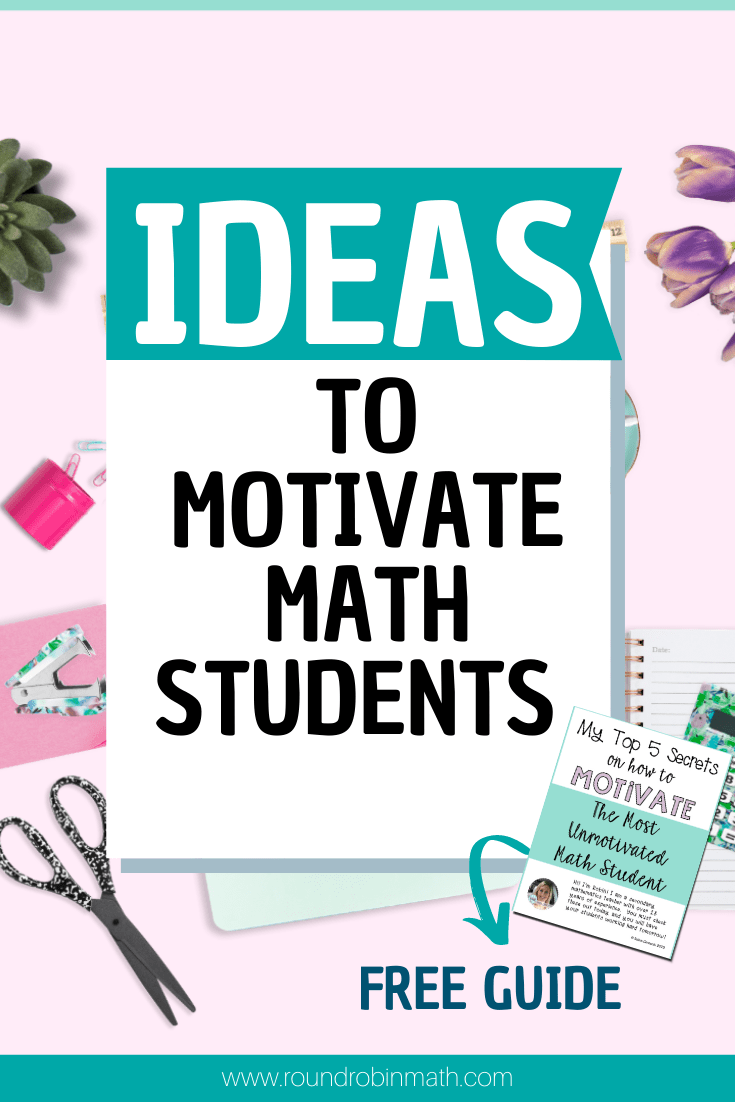
Last week we talked all about your presence in the classroom. In case you missed it, head over to this article to catch up on all things to increase student motivation in the middle and high school math classroom.
When I decided to start this mini-series, I was feeling a little hesitant to be quite honest with you. I was thinking that math teachers like you were going to be like hmmmm she is making this sound so easy!
I hear you and I understand you! Nothing is ever easy, but I promise you that it is like anything in life. The more work you put into it, the more rewarded you will be with your students working hard for you! You will actually see students of all levels enjoying the math that they are doing in your classroom. Pinky Promise!
Increasing Student Motivation in the Math Classroom
I said before that I have made it my mission to help teachers like you increase student motivation in the math classroom. My techniques aka my secrets are based on years of experience working with all levels of students to help motivate them in the classroom.
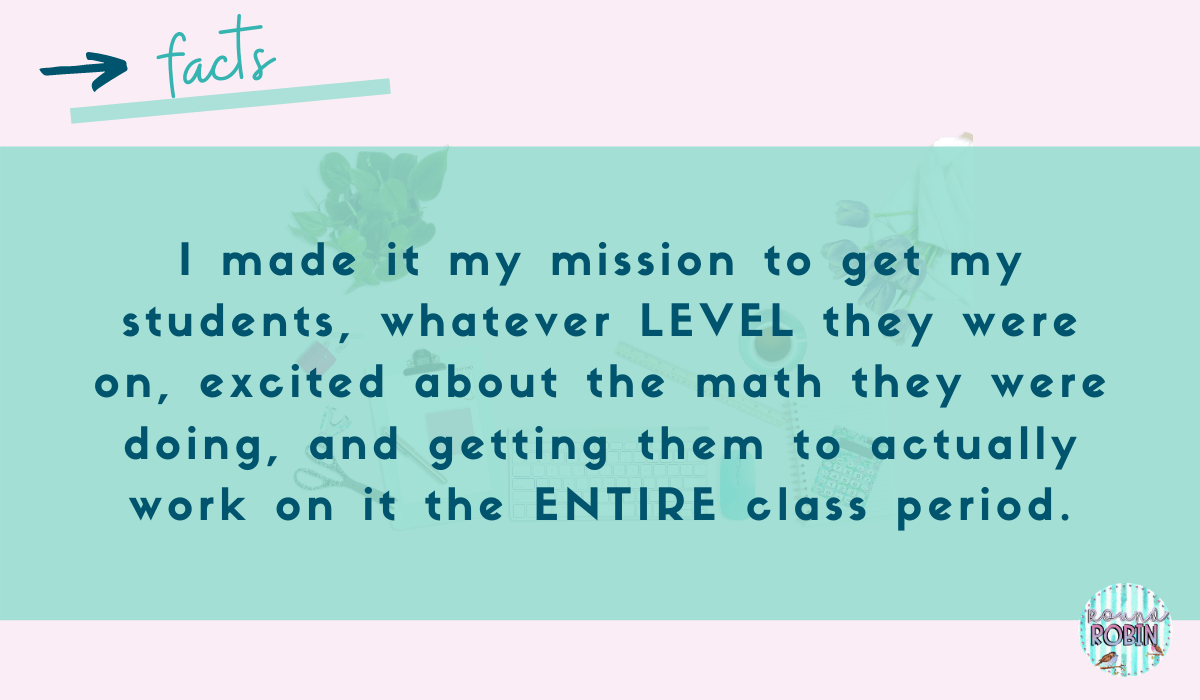
Some of these ideas are simple and may seem like no brainers, while others may be thought-provoking and can be right up there with the things that make you go hmmm!
I like to call my techniques secrets because I felt like I was the only one in this world who was trying to figure out how to motivate their students to work. Getting them to actually enjoy what they were doing in my math classroom was the ultimate goal.
My top 5 secrets on how to motivate the most unmotivated math student is a guide to get you to think about your classroom and how to make your students actually excited to do the math that you’re teaching!
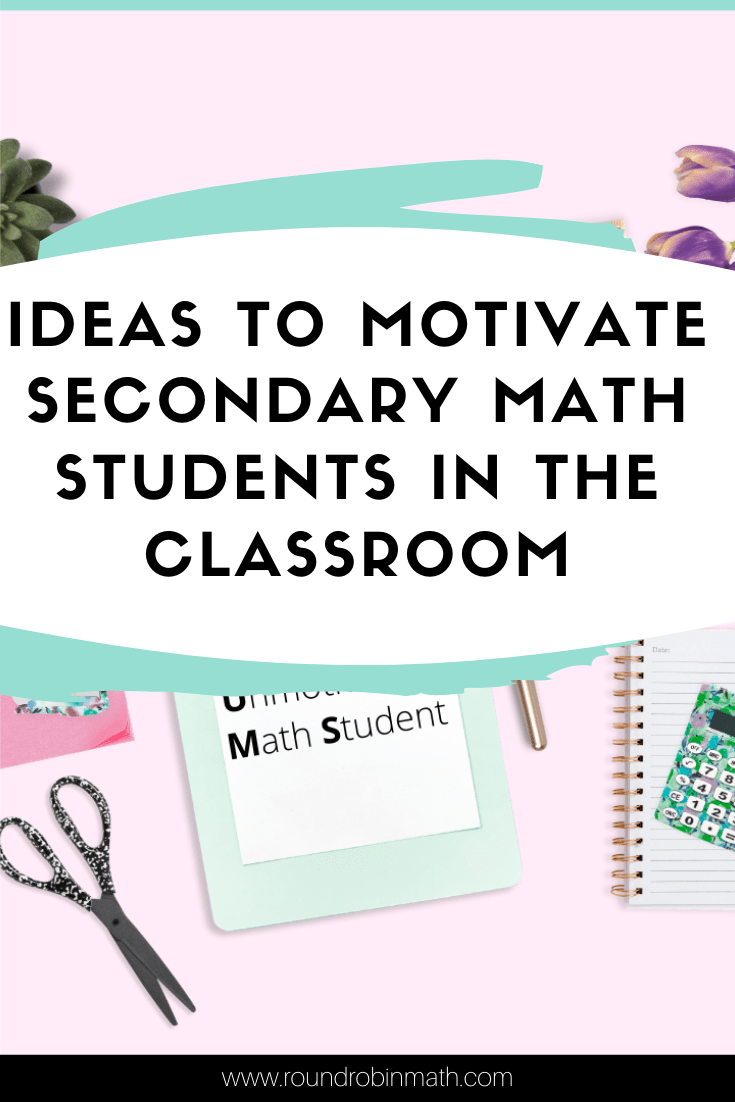
Tips to Motivate Students in the Math Classroom
All students regardless of what level they are on, learn differently then we did as a student. I don’t know about you, but my typical math lessons when I was in middle and high school, looked like this:
- Take out a notebook.
- Write down notes.
- Try to figure out what the teacher was talking about.
- The bell rings
- Write down the book page with the number of problems assigned.
- Go home and do my homework because I was a good student!
What about the students who don’t want to take notes or do their homework?
We have to think outside of the lecture.
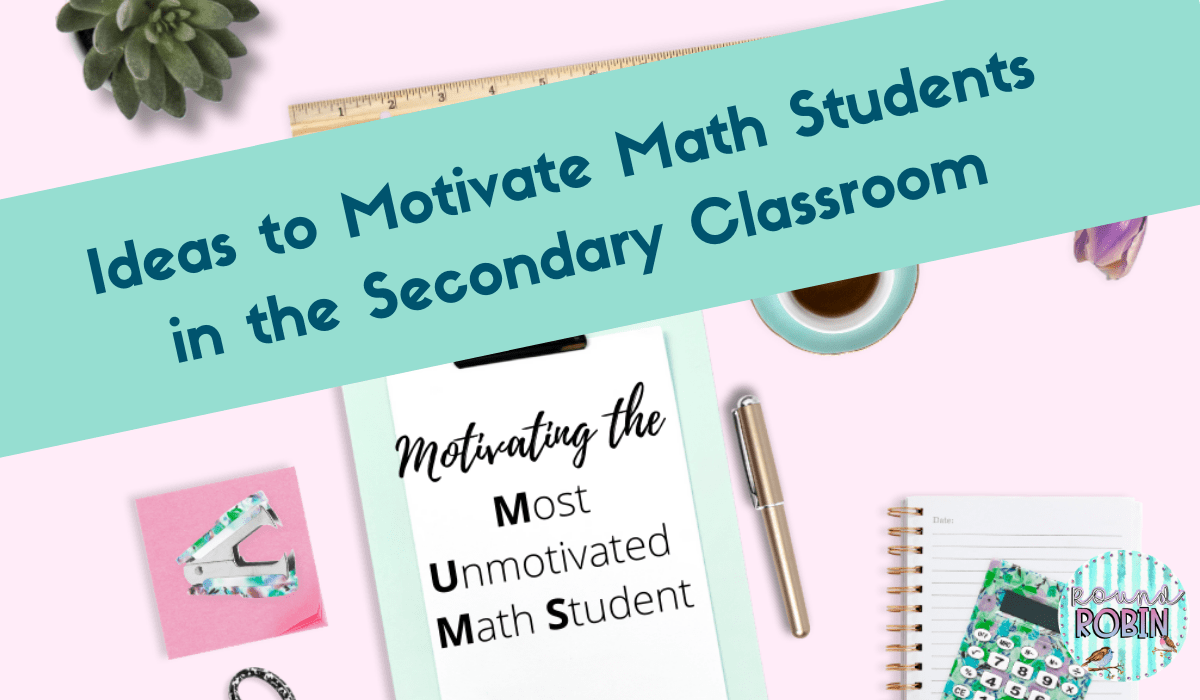
Activities to enhance learning is where my students thrive in my classroom. I can’t ever remember doing an activity when I was in high school.
Personally, I would have loved something different than doing the same thing over and over again each day. I was also a student who loved and still does love math. Can you imagine how a student who struggles with math feels day in and day out when they have to do the same thing over and over again?
Middle School and High School Math Activities for the Classroom
Activities in the classroom are my ultimate strategy in motivating students to keep them engaged. My students love the variety that I provide for them on a weekly basis. They usually always ask if they can do one particular activity over another. I’ll see if you can guess which one after we go through them all!
Questions Stacks – What is a question stack?

What is a Question Stack? Question Stacks are an idea that I found from one of my favorite math blogs: Math Equals Love. Students can work individually or in groups of 2-4. I usually only use groups of 2-3 students.
Each group will receive a question stack set of 10 cards shuffled. Students will flip cards over so that all of the answers are facing up.
They will pick 1 card and flip the card over to reveal a question. They will find their answer on the other cards and once they find their answer they will place the answer on top of the question and then a new question/problem will be revealed.
Students are finished when all questions are answered. The last question’s answer will be on the very bottom of the stack.
This activity is self-checking because if students answer all the questions correctly, each card will match an answer and there will be 0 cards remaining.
I usually make each set on a different color of card stock or paper and then laminate them, then I cut them out! I found this is the easiest way to keep them organized because if the cards get mixed up then you know which ones belong together because they are color-coordinated!
⭐Teachers Note: Make sure you shuffle the cards after you cut them out before you put them in their stack.
My students love these and I let them use individual whiteboards to solve the problems together.
See the question stacks I have used in my classroom here.
Task Cards with Fun Doodles
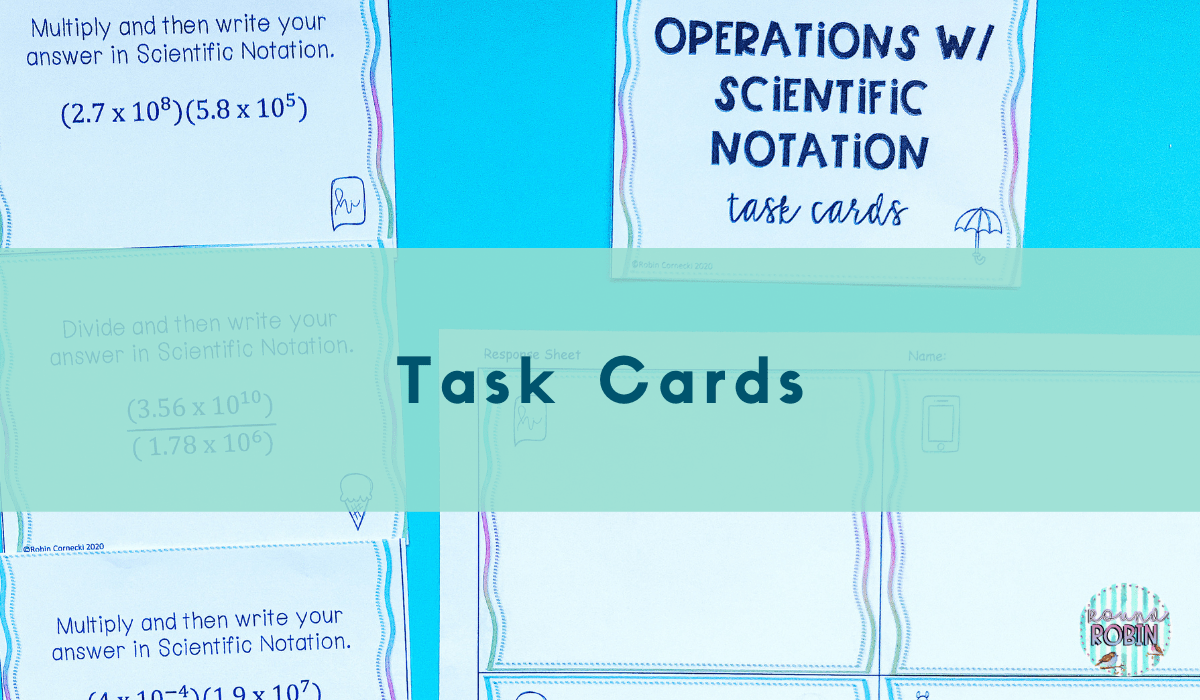
Task cards are an engaging way to let students practice concepts without overwhelming them with more than 1 problem per card.
If you are looking for different ways to use task cards in your classroom, my good friend Lindsay has all the details over in her blog post
Task card tips: copy and laminate each task card set in a different color so that if you end up losing 1 of the cards to the set, they are much easier to put back together.
See all of the task cards that I have used for my students here.
Scavenger Hunts
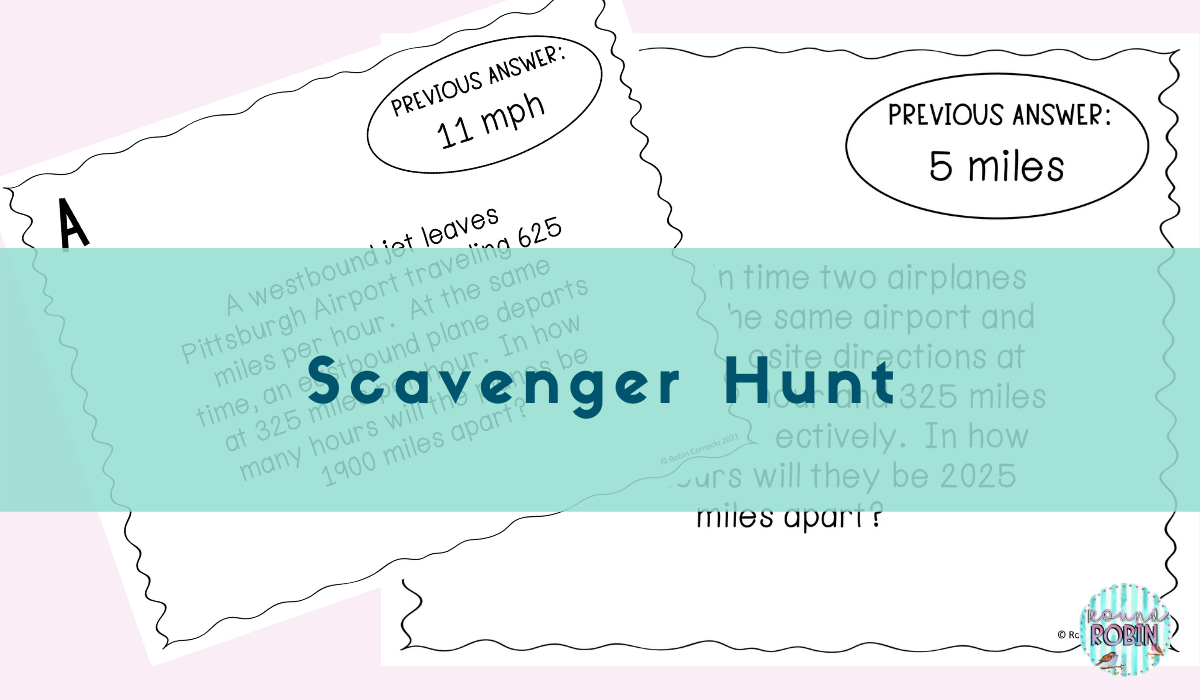
This activity is a scavenger hunt-style which is a self-checking around the room activity where students will all start on a different card by themselves or in a group.
They write their problem down in the start here box on their answer sheet, then hunt for their answer. Once they find their answer they answer that question. The students are finished when they have gotten through all the questions once. Their last question is the answer to the very first question they started with.
Review Activities: Appointment Card Activity (My Favorite!)
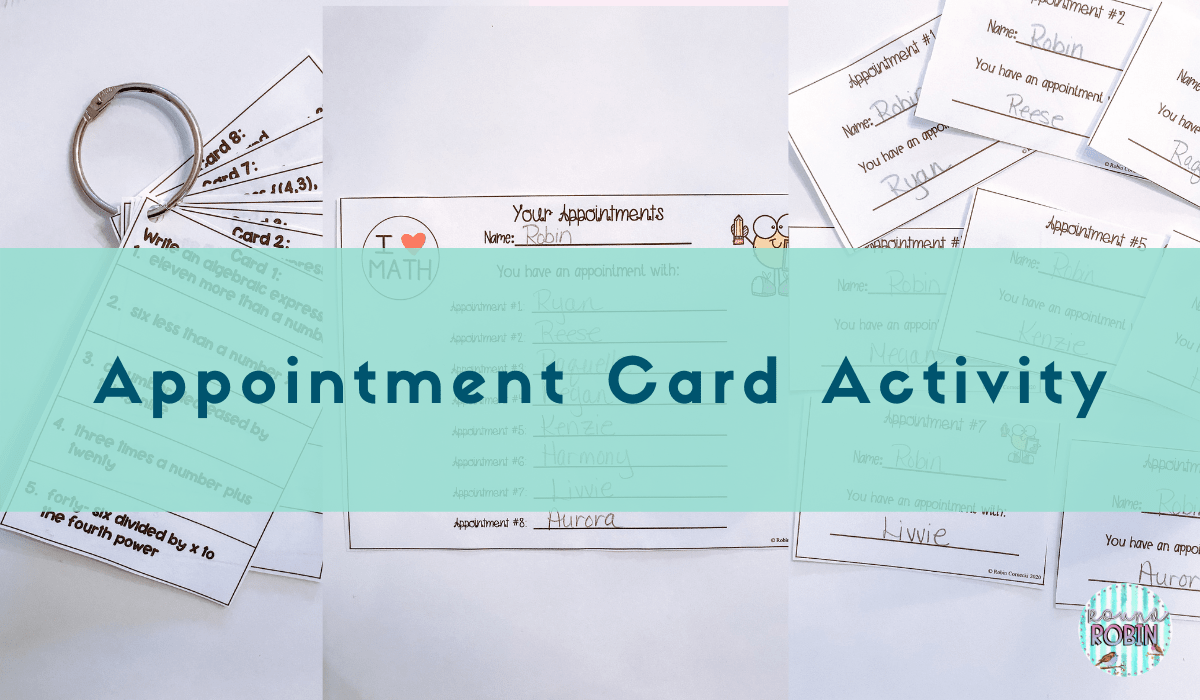
So what exactly is an Appointment Card Activity?
The idea is that students will make appointments with each other. There are 8 cards so they will make appointments with a different classmate for each of the 8 appointments. What makes this fun and engaging is that they get to pick who they want to work with!
The first method I have done is that each individual card can go to different stations for a total of 8 stations. For example, Card 1 will be at Appointment #1 (Station 1) and the student will work with whoever they chose to work with at that appointment.
The second method is that you can hole punch each card and put it in a ring clip and have students move around their desks and form their own workstations. Students seem to enjoy both methods.
I usually give the students 5 minutes to plan their appointments before they get started. I also always make myself an available appointment in case students are having trouble finding partners. Set a timer for 5 minutes for each station. Each card shouldn’t take longer than this allotted amount of time, so for a fun “race”, setting a timer always motivated my students to get busy!
In method 1, I also go through and pick 8 students to start at different stations. Then they have their partners find them, so they all don’t start at Appointment #1.
The idea is to make 8 cards with 5 problems on each card for a total of 40 different problems. You can print out and laminate each card so that it will last longer. There are also response sheets and 2 styles of appointment cards in my activities.
The first appointment card style has 8 separate appointment cards. Students can cut out each appointment. Then they staple them to their response sheets so that you can see which students worked together.
The second appointment card style has the appointments all on 1 card. The students can then just staple one card onto their response sheets.
Did you guess which one my students love? They love to do Scavenger Hunts! All-day and every day!
You can find all of the activities that I use in my classroom over at my Teachers Pay Teachers Store.
Motivate Students in the Secondary Mathematics Classroom
Short on time? Need my top 5 secrets all in 1 place?
See you next time for part 3!
Love, Robin
Latest posts by Robin Cornecki (see all)
- The #1 method for finding slope without using a formula! - April 25, 2023
- Here’s a Quick Way to Convert Percents to Fractions and Decimals. - July 21, 2022
- How to use the Four-Function Calculator for the Praxis Core Math Test. - April 23, 2022

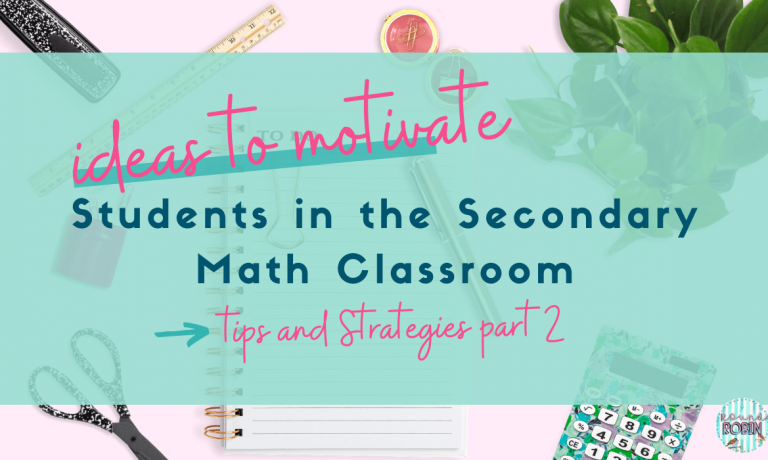

One Response